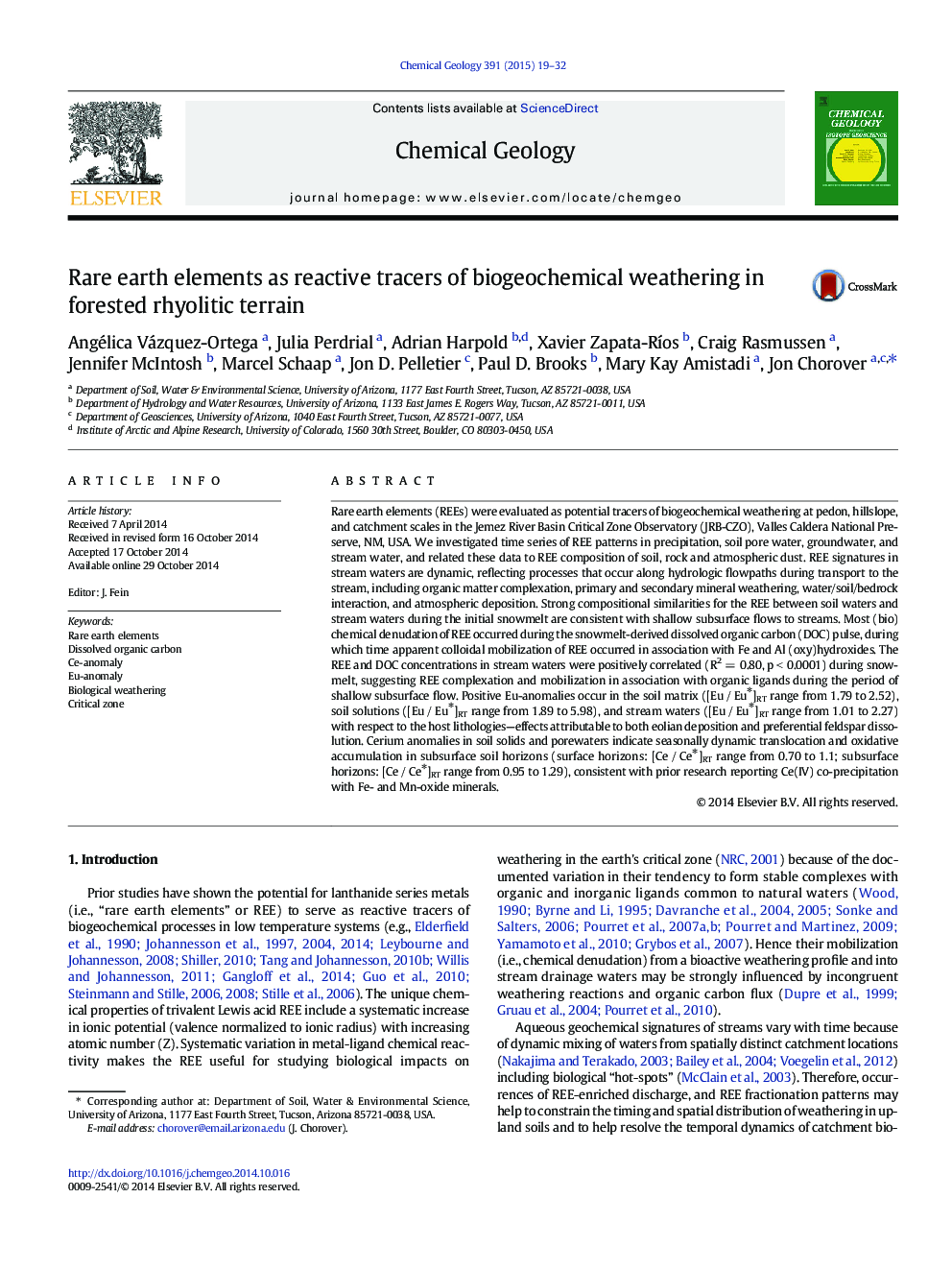| کد مقاله | کد نشریه | سال انتشار | مقاله انگلیسی | نسخه تمام متن |
|---|---|---|---|---|
| 4698619 | 1637581 | 2015 | 14 صفحه PDF | دانلود رایگان |
• Chemical denudation of REE occurs each year during a snowmelt-driven organic carbon pulse.
• Within the regolith profile, REE are translocated in organo-mineral colloidal forms.
• Organic carbon correlations in stream water suggest bio-ligand transfer of REE from terrestrial to aquatic systems.
• Europium anomalies in regolith, pore water and stream water reflect dust incorporation and preferential feldspar dissolution.
• Cerium anomalies indicate a depth-dependent trend in redox conditions that varies seasonally with dissolved organic flux.
Rare earth elements (REEs) were evaluated as potential tracers of biogeochemical weathering at pedon, hillslope, and catchment scales in the Jemez River Basin Critical Zone Observatory (JRB-CZO), Valles Caldera National Preserve, NM, USA. We investigated time series of REE patterns in precipitation, soil pore water, groundwater, and stream water, and related these data to REE composition of soil, rock and atmospheric dust. REE signatures in stream waters are dynamic, reflecting processes that occur along hydrologic flowpaths during transport to the stream, including organic matter complexation, primary and secondary mineral weathering, water/soil/bedrock interaction, and atmospheric deposition. Strong compositional similarities for the REE between soil waters and stream waters during the initial snowmelt are consistent with shallow subsurface flows to streams. Most (bio)chemical denudation of REE occurred during the snowmelt-derived dissolved organic carbon (DOC) pulse, during which time apparent colloidal mobilization of REE occurred in association with Fe and Al (oxy)hydroxides. The REE and DOC concentrations in stream waters were positively correlated (R2 = 0.80, p < 0.0001) during snowmelt, suggesting REE complexation and mobilization in association with organic ligands during the period of shallow subsurface flow. Positive Eu-anomalies occur in the soil matrix ([Eu / Eu⁎]RT range from 1.79 to 2.52), soil solutions ([Eu / Eu⁎]RT range from 1.89 to 5.98), and stream waters ([Eu / Eu⁎]RT range from 1.01 to 2.27) with respect to the host lithologies—effects attributable to both eolian deposition and preferential feldspar dissolution. Cerium anomalies in soil solids and porewaters indicate seasonally dynamic translocation and oxidative accumulation in subsurface soil horizons (surface horizons: [Ce / Ce⁎]RT range from 0.70 to 1.1; subsurface horizons: [Ce / Ce⁎]RT range from 0.95 to 1.29), consistent with prior research reporting Ce(IV) co-precipitation with Fe- and Mn-oxide minerals.
Journal: Chemical Geology - Volume 391, 6 January 2015, Pages 19–32
